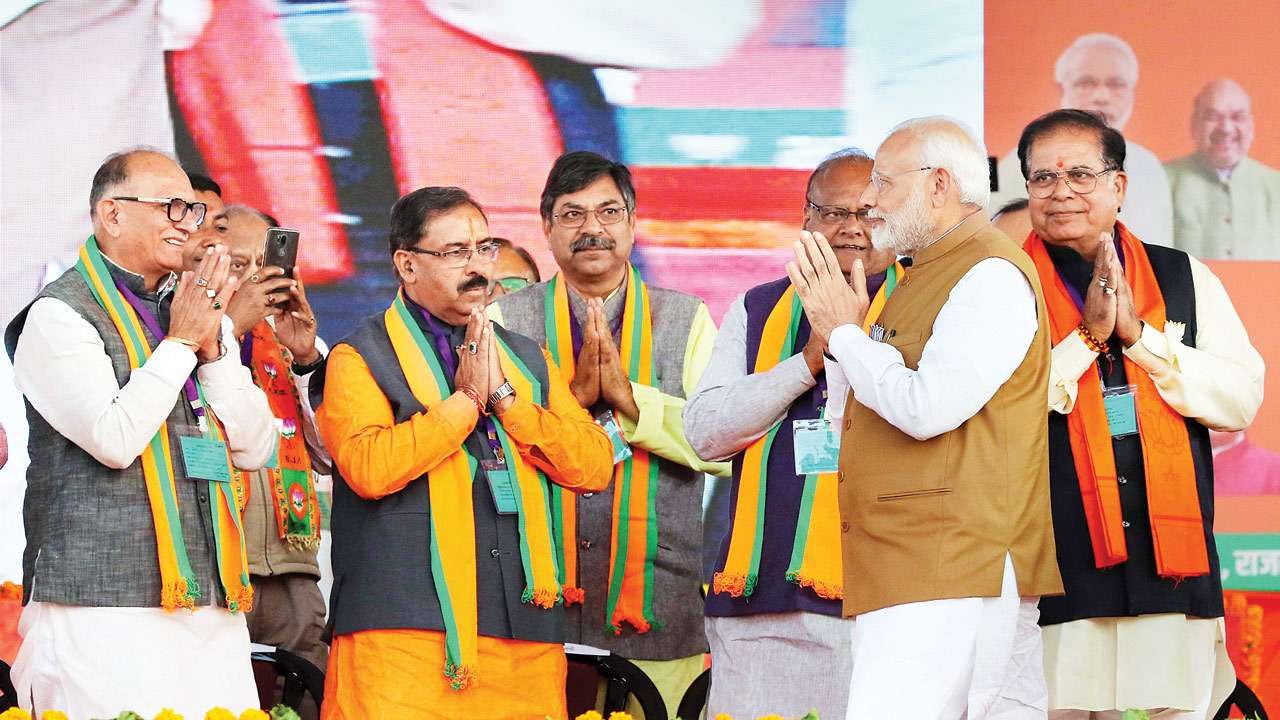
As campaigning in the five state assembly elections winds down, the day of reckoning, December 11, looms. We will have a good idea of winners and losers by early afternoon, next Tuesday.
The results in Madhya Pradesh and Chhattisgarh are especially crucial. A Congress victory in Rajasthan seems near certain, but Madhya Pradesh and Chhattisgarh are too close to call.
Prime Minister Narendra Modi has invested personal political capital in both states. Though he has addressed fewer rallies than he did in Gujarat and Karnataka, the proximity of these assembly elections to the 2019 Lok Sabha poll gives their outcome a sharp edge.
Beyond the results though lies another critical question: has Prime Minister Narendra Modi over-extended himself? Few prime ministers after Indira Gandhi have campaigned as extensively as Modi. Rajiv Gandhi was not as enthusiastic a campaigner as his mother. Narasimha Rao and Manmohan Singh too were not their parties’ star electoral campaigners.
Modi was nominated as head of the BJP’s campaign committee at the controversial national executive council meeting in Goa in June 2013 which LK Advani boycotted. It was only three months later, in September 2013, that then party president Rajnath Singh succeeded in nominating Modi, against fierce opposition from the Advani camp, as the BJP’s prime ministerial candidate. As late as August 2013, it was not certain Modi would in fact be declared the party’s prime ministerial candidate.
As campaign chief, Modi was then barnstorming across India ahead of the 2014 Lok Sabha election. Meeting him in his chief minister’s office in Gandhinagar, I told him bluntly that if the party did not declare him the prime ministerial candidate, he should ease up on his relentless, bone-crushing campaign and let other senior leaders, including those in the Advani camp opposing him, share the burden. Weeks later, Modi was officially declared the party’s PM candidate.
That though raises a question few have asked: has being the party’s chief electoral campaigner in multiple state polls over the past five election-heavy years cut into his role as prime minister? Modi already functions as the de facto foreign minister. He holds several cabinet portfolios. He travels abroad extensively, including last week’s G20 summit in Argentina. Is even the 18-hour workday that Modi puts in seven days a week enough to do justice to all the roles he has taken upon himself?
In a recently published book (Making of New India: Transformation Under Modi Government) to which I contributed a chapter, I wrote: “One of the challenges the prime minister has faced is fulfilling his multiple roles. Modi is the BJP’s most charismatic electoral asset. He leads the country’s global diplomatic outreach. And he oversees the work of a large Union Cabinet as well as a vast bureaucracy. These roles require sharply different approaches. Election campaigning needs exceptional oratory and the ability to connect with the masses. Global diplomacy requires the ability to present India’s case to world leaders with brevity, clarity and a natural, earthy self-confidence. But the most taxing is dealing with issues at home through the cabinet, the amorphous prime minister’s office (PMO) and a swathe of department officials.”
Over the past two weeks Modi has travelled to Buenos Aires to meet world leaders at the G20 summit, campaigned in Rajasthan, Telangana and Madhya Pradesh and reviewed progress on dozens of welfare schemes monitored by groups of ministers and secretaries.
Campaigning takes the most toll. In the absence of other vote-catchers, the onus falls on Modi. Party president Amit Shah, rather than any senior minister, takes on a supplementary role. Sushma Swaraj, Arun Jaitely, Rajnath Singh and Nirmala Sitharaman, who form the inner core of the cabinet and are members of the cabinet committee on security (CCS), have played a minimal role in campaigning for the five state assembly elections.
They are, due to health and other reasons, unlikely to campaign actively for the 2019 Lok Sabha election. It is for this reason that Modi has called for simultaneous parliamentary and assembly elections. Almost year-around campaigning takes away far too much time and energy.
Constitutional and logistical reasons, however, make simultaneous elections virtually impossible. Modi is thus left with the prospect of dividing his time between domestic governance, foreign affairs and electioneering. As a result, much of policymaking that should belong to the cabinet is delegated to the Prime Minister’s Office (PMO) and then farmed out to groups of ministers and secretaries.
In Gujarat, relying on a tightly monitored bureaucracy worked well. In labyrinthic Delhi, where intrigue lurks around every corner, it hasn’t. The contretemps in the CBI, the dissonance with the RBI and the continuing slugfest over the Rafale deal underscore how a government can be undermined.
Modi at 67 is remarkably fit but the burden of carrying so many responsibilities will eventually tell on him. If the BJP-led NDA manage to form the government in 2019, he will need to change his strategy: bring more lateral talent into the cabinet, allow younger ministers to campaign across states and impose stronger control over the bureaucracy, especially in the ministries of finance, defence and civil aviation.
In May 2014, the question was: would Modi reform intrigue-plagued Delhi or would Delhi co-opt him? That question will be answered in May 2019.
Author is a well-known writer